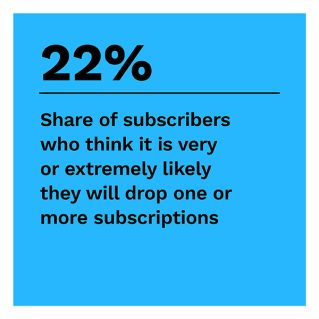Subscriptions Front and Center of Consumers’ Essential Non-Essential Debate

Inflation is changing consumer behavior — and not just in terms of shoppers looking for bargains. Many consumers are on the verge of eliminating subscriptions that do not maximize affordability and convenience. Subscription service providers seeking to retain these customers’ loyalty must optimize their offerings for user experience and value.
The “Subscription Commerce Conversion Index: Subscribers Seek Affordability and Convenience,” a PYMNTS and sticky.io collaboration, examines how inflation is impacting consumer choice and details what is driving shoppers to take on new subscriptions despite heightened inflation.
Affordability and convenience are still key
Even before inflationary pressures began to influence consumer choice, shoppers wanted convenience. Affordability has also become central to their choices, according to the report.
Economic uncertainty tends to refocus consumers’ priorities, and our research found that inflation is inspiring consumers to be frugal and think more about the big picture. They are less inclined to surrender a portion of their budgets to things that might have been relatively inexpensive impulse purchases a few years ago and are more focused on saving money and covering the basics.
Inflation is not just inconvenient for consumers — the pace and intensity of inflation have become a catalyst for more conservative consumer spending habits. As the country enters its 19th month of elevated inflation, $1 buys 11% less than it did in February 2021. Also, 87% of consumers say their incomes have not increased fast enough to compensate for price increases.
Most consumers are subscribers, but close to half are uncertain they will continue to subscribe
While most consumers are subscribers, about 43% have doubts they will renew one or more of their subscriptions. The report notes that slightly more than 80% of American households have a subscription — but this belies key trends that reflect a shift in consumer sentiment. In every category except streaming entertainment, subscription rates are down. There may be multiple reasons for this shift, but the most pressing issue is likely inflation and consumers’ drive to get the most value out of their budgets.
According to our survey, fewer consumers expect to add subscriptions than those planning to cancel, a trend that may continue until inflation slows. Millions of consumers have canceled their subscriptions, citing cost as the most common reason: 34% said they wanted to reduce their expenses, and 14% cited an increase in subscription costs.
That places the onus on subscription services to develop a powerful appeal to subscribers, focused on affordability, convenience and value. Our other key findings include:
• Consumers appear to be consolidating their subscription activity through Amazon Subscribe & Save as they shed other subscriptions. Consumers are looking for ways to save conveniently, and Amazon is simplifying the process for many.
• Subscribers are reducing expenditures on nonessentials — and subscriptions are on that list. Consumers are ready to let go of subscriptions that do not prove their value in terms of convenience or affordability.
• Higher-income subscribers are most likely to temporarily take on a subscription, abandon it or add a new one according to their in-the-moment needs. Higher-income consumers are more likely to decide about their subscriptions in the coming year — and most likely to add a subscription if it meets their criteria for affordability and convenience.
To learn more about how consumers’ subscription preferences have shifted, download the report.

